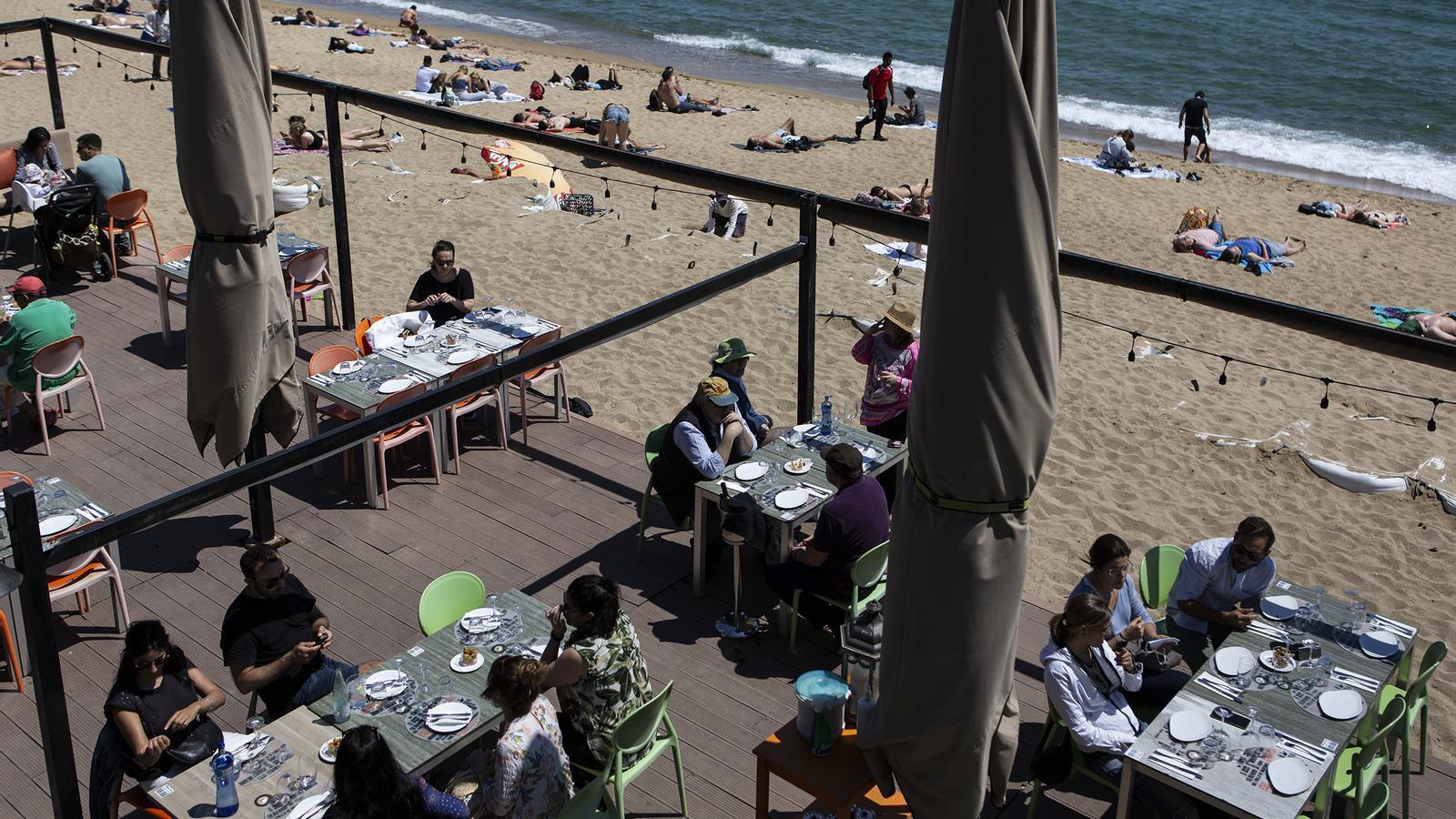Covid: Catalonia no-longer high risk
Only the Balearic Islands and the Valencian Country have the pandemic under control with 50 cases per 100,000 inhabitants


BarcelonaThe recovery of some social activities such as dinners and nightlife have slowed down the decline in the curve of infections, although this change has not altered the trend of the epidemic in Catalonia, which continues to recede day after day. The last week 4,700 coronavirus cases were diagnosed, fewer than 700 cases per day on average, and as the vaccination of those over 50 years old advances hospitals are freeing up. Hospitalisations on the ward are down 18% compared to last week and also the intensive care units (ICU) - where there are still 344 seriously ill patients - have 14% fewer patients.
But if there is one indicator that has plummeted and will make a difference in the remainder of the epidemic it is mortality. Weekly deaths have plummeted by 50% compared to last Friday: from around ninety to 44. On the way to getting this number down to zero, it will be necessary for all people over the age of 40 to be vaccinated before see such a drastic reduction again.
Meanwhile, and although the end of the state of alarm and curfew have slowed the rapid decline in new infections due to increased social interaction, health authorities say it is a "predictable and assumable" effect. The cumulative incidence (IA14) shows that the risk of infection is becoming less frequent, although it is still high: in the last 14 days 153 infections per 100,000 inhabitants have been diagnosed, far from the 300 cases that were now recorded just a month ago. However, to consider that the epidemic is under control this figure must be under 50.
Farewell to the mask outdoors
In the daily report issued by the Spanish Ministry of Health, however, Catalonia is already below 150 cases. This figure is one of the criteria that the director of the Centre for Coordination of Health Alerts and Emergencies (CAES), Fernando Simon, proposed as a threshold for communities to begin to consider more daring steps in the relaxation of containment measures, such as getting rid of masks outside. Catalan Health Minister Alba Vergés also admitted that Public Health's forecast is for masks no longer to be compulsory outdoors this summer "if all goes well".
The situation is similar in the rest of the state. With greater or lesser intensity, but the indicators of all the autonomous communities are going down. Since Friday there is no longer any territory with extreme transmission risk, after the Basque Country reduced its incidence below 250 cases per 100,000 inhabitants. Thus, only five communities are at high risk, i.e. have a cumulative incidence of over 150 cases: Euskadi (225), Madrid (225), Aragon (200), Andalusia (165) and Navarra (159). Catalonia (146) fell off this list on Friday after reducing its IA14 five points
On the hand, the Valencian Country and the Balearic Islands are the regions with the lowest incidence in the State. And not only this: their risk of contagion is low, since it is below 50 positives per 100,000 inhabitants. The case of the Balearic Islands (42) it is explained, in part, by its own nature, since as an island it has it easier to control internal and external mobility, key in the transmission of the virus.
The example of the Valencian Country
However, the Valencian Country is the community with the fewest cases, with 29 diagnoses per 100,000 inhabitants, despite having the third and ninth largest metropolitan areas in Spain: Valencia and Alicante. "It is the peninsular territory with the best figures and has even kept them up for two months already," sums up the researcher at the Foundation for the Promotion of Health and Biomedical Research of the Valencian Community (Fisabio), Salvador Peiró. For the epidemiologist, the population understood by force that they had to limit contact with their cohabitants during the third wave, which was "terrible". The onslaught led to more than 5,000 deaths and thousands of hospitalisations in a few weeks after spending a year with relatively contained figures.
The specialist in preventive medicine and public health at the Miguel Hernández University of Elche, Ildefonso Hernández-Aguado, agrees - he describes the third wave as a "collective" failure - but attributes the epidemiological control to three factors: the strong tradition of Public Health in the region, political leadership and a very slow de-escalation. According to Hernández-Aguado, the Valencian Country has never lacked trackers and epidemiological surveillance has not had to be strengthened as much as in other territories due to the pandemic. In addition, he says, the management of the coronavirus has not been a point of conflict or political tension. "The debates were very intense but always from a scientific and technical point of view and I think this has meant the population had the perception that the restrictions or decisions that were taken were consistent," he says.
Prudence defines the de-escalation "Valencian style": despite having enviable figures for the rest of the state, experts and the administration believe it can be lowered further. So the curfew between 6 am and midnight will remain in place for two more weeks, and bars and restaurants will not be allowed to stay open beyond 23 hours. "It is always more complicated to deploy restrictions preventively than as a reaction to an upturn, and in our case they have been put in place when necessary. Now that we are improving, there is no hurry to lift them," says Peiró
